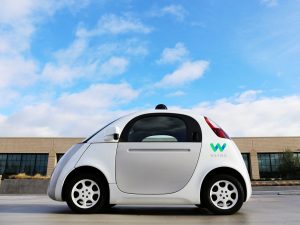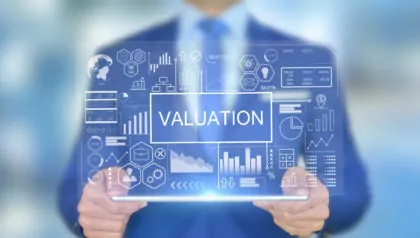 The field of machine learning is advancing rapidly, and it won’t be long before it touches your business. Just as the advent of mobile apps upended business, and as the advent of the Internet of Things changed industries, so too will advances in machine learning require adaptation by workers, managers, and executives.
The field of machine learning is advancing rapidly, and it won’t be long before it touches your business. Just as the advent of mobile apps upended business, and as the advent of the Internet of Things changed industries, so too will advances in machine learning require adaptation by workers, managers, and executives.
Machine learning is no longer a futuristic concept, nor an empty buzzword. Its most visible incarnation is in self-driving or assisted-driving cars – Google, Uber, Apple, and even Ford are all making headlines with their investments and advances. These are likely to eliminate many transportation jobs as they become more effective and economical – and their astonishing capabilities are made possible by machine learning. And in case you think this is only about robot cars, or robots building cars, consider how JPMorgan Chase recently unveiled an application that takes away 360,000 hours of work each year from lawyers and loan officers.
This field is still in its infancy, yet is already having profound effects. In the next few years, we can expect to see changes that will affect business all over the world.
The nature of machine learning
Machine learning refers to any computer that can draw insights from data without explicitly being told where to look or what to do. The software learns through iterative modeling. As new data are discovered, the models are adapted to account for it. With enough iterations, a machine can understand complex tasks and situations to a degree that would be impossible without machine learning.
Neural networks
One special type of machine learning that exemplifies the qualities and nature of the field involves the use of “neural networks.” These are systems of software modeled on the human brain, and designed to emulate some of its capabilities. This technique is also known as “deep learning.”
How it works: Neural networks simulate layers of “neurons,” which individually analyze data. These neurons are interconnected, so the output of each “layer” of calculation affects how the next layer goes about interpreting its inputs. Over time, these layers can practice interpreting a set of data, and learn to perform a task successfully.
This is a fairly abstract explanation; an example will help.
Let’s say you are creating software designed to recognize and read road signs. Tasks such as these have traditionally been very difficult for machines – hence the effectiveness of old-style recaptcha technology.

While it’s pretty easy for us humans to recognize and parse those warped letters, it has traditionally been hard to do that in software. Machine learning is changing that. While the machine is learning, images of road signs, tagged with what they say, together with objects that are not road signs will be fed into the machine. Once the data has passed through each layer, the machine will make a prediction about what is in the image. These predictions will initially be very inaccurate, but will become better as the machine practices. Once it is good enough at recognizing the learning data that we gave it, it’s ready to start working on things it has never seen before.
As a side note, you may have noticed lately that Recaptcha has moved from warped text to asking you to identify things in images. That’s because hackers have gained the ability to “read” that warped text. As an interesting aside, your responses to those image-based Recaptcha challenges are in fact being used to further train Google’s own image recognition engine.
The underlying processes of machine learning are complex, and heavy with math and statistics. But it may help for you to understand the basic flow. Data will pass through four layers:
- Convolution: The image is broken down into different features. Yellow pixels, straight lines, edges, etc.
- Activation: Less-obvious features are picked out from the pool of basic pictures. Words and letters start to emerge.
- Pooling: A huge amount of data is generated in the first two layers. The pooling layer prunes this data. Only the best examples of each feature are preserved.
- Fully connected: All the data are collated and a final determination is made as to the nature of the image.
The potential of machine learning
If machine learning has not touched your industry yet, there is a surprisingly good chance that it will one day, and soon. Here are just a few of the industries that are making use of machine learning today:
Financial services: Machine learning is being used to prevent fraud, and to identify market opportunities, by learning from customer data. And, as noted earlier in the JPMorgan Chase example, it’s being used to interpret contracts and loan agreements in great volume.
Government: Public utilities are using data mining and machine learning to pinpoint insights in huge volumes of usage data – insights that humans would be unlikely to identify on their own using such massive datasets.
Healthcare: In this field, machine learning is starting to overlap with another notable trend in technology: the Internet of Things. Wearable devices and sensors are being used to gather data about patient health in real time, and machine learning is used to analyze that data to gain insights into its meaning.
Marketing: The ability of sites such as Amazon to analyze your buying history and make accurate targeted recommendations, or to dynamically adjust pricing, is due in large part to the power of machine learning.
Oil and gas: Machine learning has a tremendous number of applications in this field, from finding new sources of oil and gas, to analyzing the potential failure of equipment, to streamlining oil distribution.
Transportation: On top of the obvious impact of assisted or autonomous driving, machine learning technology is revolutionizing this field through better mapping, scheduling, fleet planning, route-optimizing, and much more.
Like many innovations, machine learning did not just spring into existence. The mathematics are well understood, and neural network research has been going on for decades. What makes today the era of machine learning is that we can now realize its potential due to the massive amounts of data available to us – the proliferation of free data available online, data you can get from your customer interactions, IoT sensors gathering data from your systems, and advances in data storage to hold it all cheaply – coupled with scalable processing power available in the cloud. These technologies are only likely to become more powerful over time; the long-term effects are very difficult to predict.
Machine learning and your business
It’s time to start thinking about how machine learning will affect your field. How could it make your life easier? More importantly, how might competitors start using it against you? What opportunities are there for your company to take advantage of it?
As a long-time developer of software, we’ve seen how software is increasingly used to solve business problems. Even if software isn’t “what you do,” your business runs on software and your products are partially (if not fully) software-based.
The same trend is already happening with machine learning. Market leaders are finding ways to incorporate machine learning into their products and services, or to develop new products and services that depend completely on machine learning.
Solving a business problem or opening new opportunities with machine learning may be a matter of choosing to invest in it. The advantage will lie with those who stay on the bleeding edge.


